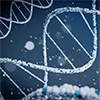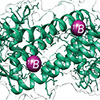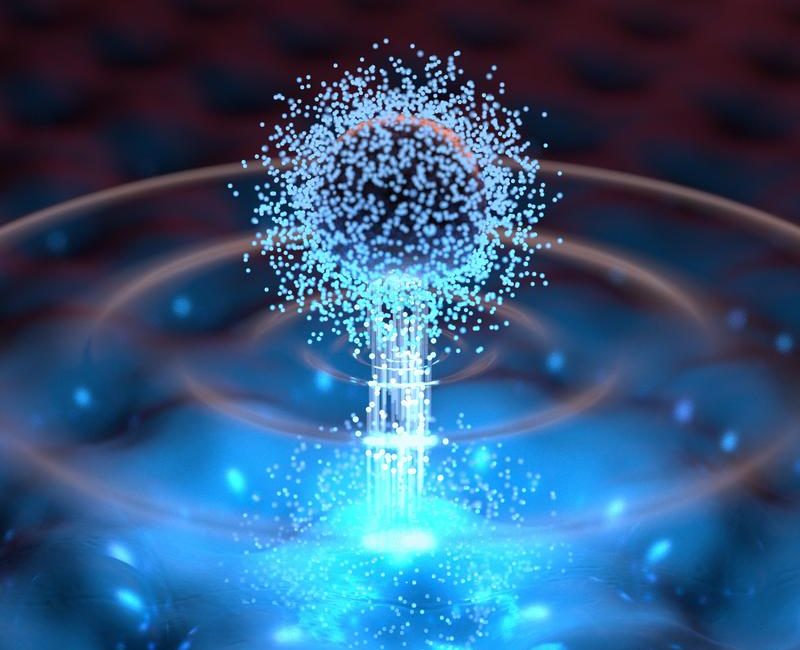May 09, 2024 (Nanowerk News) Shortly after the Universe began with the Big Bang, the first stars, composed mainly of hydrogen and helium, began to form. The properties of these first-generation stars, Pop III, are very different from stars like our own Sun or even the ones that are forming...
Discovering optimal conditions for mass production of ultraviolet holograms
May 09, 2024 (Nanowerk News) Professor Junsuk Rho from the Department of Mechanical Engineering, Chemical Engineering, and Electrical Engineering, Hyunjung Kang and Nara Jeon, PhD candidates, from Department of Mechanical Engineering and Dongkyo Oh, a PhD student, from the Department of Mechanical Engineering at Pohang University of Science and Technology...
Physicists reveal the microscopic basis of a new form of quantum magnetism
May 09, 2024 (Nanowerk News) Not all magnets are the same. When we think of magnetism, we often think of magnets that stick to a refrigerator’s door. For these types of magnets, the electronic interactions that give rise to magnetism have been understood for around a century, since the early...
Scientists developed innovative method to customize and strengthen DNA origami structures
May 09, 2024 (Nanowerk News) A new technique in building DNA structures at a microscopic level has the potential to advance drug delivery and disease diagnosis, a study suggests. A team of scientists, from the universities of Portsmouth and Leicester in the UK, has developed an innovative way to customise...
Chemists produce new-to-nature enzyme containing boron
May 09, 2024 (Nanowerk News) Boronic acid has been used in organic chemistry for decades, even though it is not present in any organism. ‘It gives rise to different chemical reactions than those we find in nature,’ explains Gerard Roelfes, Professor of Biomolecular Chemistry & Catalysis at the University of...
Beat the heat with radiative cooling
May 09, 2024 (Nanowerk News) As consumer electronics become ever more compact, while still boasting increased processing power, the need to manage waste heat from microcircuits has grown to become a major concern. Some scientific instruments and nanoscale machines require careful consideration of how localized heat will be shunted out...
Innovative electrospinning method creates advanced ceramic nanofibers and springs
May 09, 2024 (Nanowerk Spotlight) Ceramics boast impressive strength and durability, but their inherent rigidity and brittleness have long hindered applications demanding flexibility, such as filters, sensors, wearable devices and flexible electronics. Materials scientists have pursued methods to capture the desirable properties of ceramics like titania and zirconia in a...
Scientists observe and analyze a phenomenon that combines optical-electrical-mechanical properties in a 2D atomic layer
May 08, 2024 (Nanowerk News) The results of observation and analysis of a phenomenon that combines optical, electrical, and mechanical properties in a two-dimensional atomic layer were revealed by a joint Korean-American research team and published in Nano Letters ("Optically Triggered Emergent Mesostructures in Monolayer WS2"). The Gwangju Institute of...
Swarms of miniature robots clean up microplastics and microbes, simultaneously (w/video)
May 08, 2024 (Nanowerk News) When old food packaging, discarded children’s toys and other mismanaged plastic waste break down into microplastics, they become even harder to clean up from oceans and waterways. These tiny bits of plastic also attract bacteria, including those that cause disease. In a study in ACS...
Atomic-scale telegraphy with light
May 08, 2024 (Nanowerk News) In the 1880s Heinrich Hertz discovered that a spark jumping between two pieces of metal emits a flash of light – rapidly oscillating electromagnetic waves – which can be picked up by an antenna. To honour his groundbreaking work, the unit of frequency was named...










